




























Successfulbusinessesaretheonesthatare adept,innovativeand consistentlylooking forwaystomakebetter,moreconfidentdecisions.

EideBaillyhas grownfroma localaccountingfirminto atopbusiness advisory firminthenation by helpingbusinesses take onthenow and thenext with inspiredideas,solutionsand results.
Whetherit ’s taking controlofdatatogain realbusinessintelligence, tacklingcybersecurityoroutsourcingday-to-daybusiness functions to maketime forwhatmatters, EideBaillyhas theresourcestokeep you moving forward,nomatterwhere youare in your businessjourney.





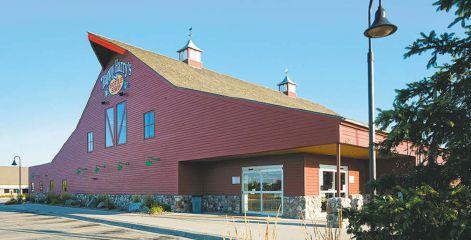
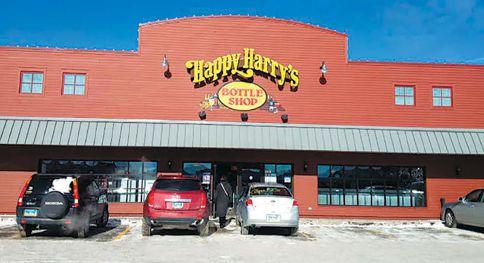

“They were instrumental in building the business over many years,” Gershman said. “That’s why we were so comfortable creating the ESOP (employee stock ownership program).”


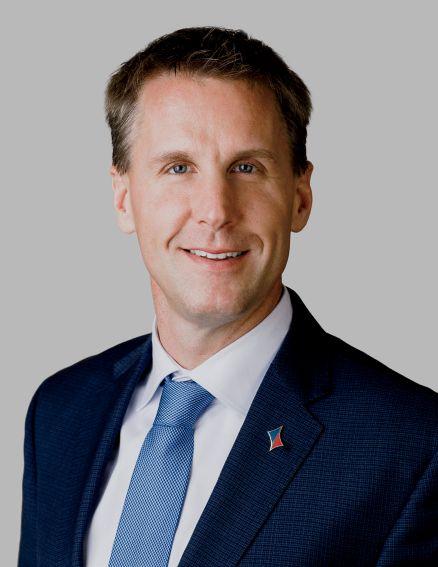





Whatbeganasasmallaggregate businessinruralND,has evolvedinto anall-encompassingaggregate andlanddevelopmententerprise. We nowhave officesandcommercialpitsin9states,andour fabricated aggregate equipmentisbeingusedthroughoutthe world. We welcome challengesand tackletheindustry’s toughestjobs.Bridges, levees, roads,and walls; we doitall!


































Let our expe rt s help yo u custom -design anem ployee be nefits pa ckag e th at works fo r yo u to day an d he lps yo u get to wh ere yo u wa nt to be to mor row.
Let’s getstar ted on your employee benefits plan .








Co ntac t an ag en t to day.
Jo Hatfield
Fa rg o• 701. 28 2.11 53


Mitch Kudrna
Fa rg o• 701. 28 2.14 46
Nicole Wolla
Di ckin so n• 701.71 5. 9028
Ryan Hartje
Bi sm arck • 701. 25 5. 55 62
Don Kramer Grand Forks/Devils Lake 701.79 5. 53 48
Derek Van Dyke
Mi not• 701. 85 8.5 01 9
Holly Bohler
Wi lli ston • 701.71 5. 9029
A GOOD TIME WAS HAD BY ALL AT PRAIRIE BUSINESS’ ANNUAL AWARDS CELEBRATION, WHICH WAS HELD MAY 16 AT THE AVALON EVENTS CENTER IN FARGO, N.D. THE CELEBRATION HONORED WINNERS OF THE MAGAZINE’S LEADERS & LEGACIES, 40 UNDER 40 AND TOP 25 WOMEN IN BUSINESS AWARDS. PAGE 20. IMAGE: NICK NELSON/FORUM COMMUNICATIONS.
ON THE COVER:
‘HUMBLING’ WAS THE WORD USED BY KORRIE WENZEL, PRAIRIE BUSINESS PUBLISHER, WHEN HE DESCRIBED ENCOUNTERING THE EXCEPTIONALLY TALENTED EXECUTIVES WHO ARE THE MAGAZINE’S 2019 LEADERS & LEGACIES AWARD WINNERS. PAGE 22.

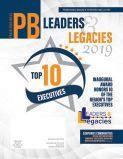




tdennis@prairiebusinessmagazine.com
701.780.1276
Two interests of mine come together in this issue. The first is the region’s remarkable economy and the leaders who’ve helped it grow. In this issue, we honor 10 of those leaders. They’re the winners of our inaugural Leaders & Legacies awards, an award created to call attention to the area’s top entrepreneurs and CEOs. Some of our winners started their own business and nurtured it to exponential growth. Others assumed leadership of a firm and ratcheted up its performance.
But all proved adept at planning, hiring and innovating, and to a person, they poured resources into community service. Search America from sea to sea, and you won’t find a more talented group.
Now, my second, seemingly unrelated interest: the fact that Prairie Businessarea families entirely escape the pressure on teens to get into selective colleges. Don’t take that gift for granted, because it’s a huge differentiator between Bismarck and Boston, and the difference is entirely in Bismarck’s favor. For local teens and their parents, it’s a blessing to know that you’re welcome to try to get into Harvard –but you’re also welcome not to do so, and if you choose to stay in the region, we have plenty of institutions where you’ll thrive.
And here’s the link: None of our Leaders & Legacies winners went to Ivy League schools. All were “schooled” (via higher ed or life experience) right here at home.
As Art Hagg, counseling director at O’Gorman High School in Sioux Falls, S.D., says in this issue, “a lot of our kids realize that they don’t have to go to a highly selective school in order to be successful.” Truer words were never spoken, and every Prairie Business reader should be grateful for that.

Good reading, Tom Dennis
I welcome your feedback and story ideas. Call me at 701-780-1276 or email me at tdennis@prairiebusinessmagazine.com.
PUBLISHER KORRIE WENZEL
LORD
MANAGER BETH BOHLMAN
LAYOUT DESIGN JAMIE HOYEM SARA SLABY KAYLA RONNGREN
ACCOUNT MANAGERS
NICHOLE ERTMAN 800.477.6572 ext. 1162 nertman@prairiebusinessmagazine.com
PETER FETSCH 800-477-6572 ext. 1172 pfetsch@prairiebusinessmagazine.com
Prairie Business magazine is published monthly by the Grand Forks Herald and Forum Communications Company with offices at 375 2nd Avenue North, Grand Forks, ND 58203. Subscriptions are available free of charge. Back issue quantities are limited and subject to availability ($2/copy prepaid). The opinions of writers featured in Prairie Business are their own. Unsolicited manuscripts, photographs, artwork are encouraged but will not be returned without a self-addressed, stamped envelope.
SUBSCRIPTIONS
Subscriptions are free www.prairiebusinessmagazine.com
ADDRESS CORRECTIONS
Prairie Business magazine Box 6008 Grand Forks, ND 58206-6008 Beth Bohlman: bbohlman@prairiebusinessmagazine.com
ONLINE www.prairiebusinessmagazine.com
Sanford Medical Center Fargo is currently seeking driven and compassionate individuals for several clinical and non-clinical positions. At Sanford Health we take care to the next level, combining expertise, state-of-the-art technology and quality patient experience. As Fargo’s largest employer, we offer competitive pay and comprehensive benefit options including paid time off, a variety of insurance plans, retirement savings, employee perks and more. Make a difference is someone’s life by joining us in our dedication to the work of health and healing.


NOW HIRING
We are currently looking for qualified applicants in the following areas:
• Nursing – RN and LPN
• Respiratory Therapy
• Radiology
• Lab
• Surgical Technologists

























• Customer Service
• Environmental and Food Services
For more information, or to apply visit sanfordhealth.jobs
Editor’s note: I grew up in Rhode Island, and while I miss some elements of life on the East Coast, one thing that I do not miss at all is the pressure on teens to get into selective colleges.

That pressure is enormous in the East Coast’s middle- and upper-class suburbs, and it twists and squeezes families on the West Coast as well, as the recent “Varsity Blues” scandal –which is sending celebrity and other millionaire parents to jail for admissions fraud – shows.
In contrast, that pressure in North Dakota and South Dakota is almost completely, and blissfully, absent.
Why?
That’s the question I posed to Art Hagg, counseling director at O’Gorman High School, a Catholic high school in Sioux Falls, S.D.
A quick note about O’Gorman:
Of the 169 members of O’Gorman High School’s Class of 2017, 31 scored a 30 or higher on the ACT. That means those 31 students scored in the top 6 percent on the nationwide test.
Moreover, 49 students had a weighted or unweighted GPA of 4.0. Some good share of those A’s were earned in the 19 Advanced Placement classes that O’Gorman offers.
Last but not least, O’Gorman has, since 1968, won more state athletic championships than any other high school in South Dakota –despite the fact that it’s one of the smallest high schools in the state’s AA or highest division.
Clearly, high numbers of O’Gorman students could, if they chose, compete for admission to Harvard, Yale or any other highly selective college in America.
If they chose. But only a few choose to do so,
By tom DennisHagg notes below.
Moreover, O’Gorman is not alone in this, as shown by the fact that so few students from the Dakotas apply to Ivy League schools, those schools generally give those applicants a leg up (in the name of “geographic diversity”) in the admissions process.
Here’s Hagg, who’s retiring this year after counseling students for 39 years (28 of them at O’Gorman), on the Midwestern culture that has – so far, at least – kept this particular pressure of modern American life to a minimum.
Tom Dennis Editor, Prairie Business tdennis@prairiebusinessmagazine.com
701-780-1276


When High Plains residents count their blessings, they should include this: The near-complete absence of pressure to attend Ivy League schools
Q. What’s your sense of the pressure that O’Gorman High School Students may or may not feel to get into selective schools?
Hagg: We do have some of that pressure. For example, at O’Gorman, we have 90 percent of our students going on to four-year colleges. So when you have that percentage, you’re going to have a percentage up toward the top – say, 5 percent to 8 percent of the class – who may be considering highly selective schools, whether it’s the Ivies or, more commonly around here, Northwestern or Notre Dame.

We have a student going to the Air Force Academy, for example. We have a student going to Notre Dame, a student going to Marquette, a student going to Berklee College of Music in Boston.
And because we’re a Catholic high school, we have that inherent interest in other Catholic colleges in addition to Notre Dame. Especially those colleges that are in the region: so, for example, we have three students going up to the University of Mary in Bismarck, we have students going to colleges such as St. Thomas, St. Benedict’s and St. John’s, we
have students going to Creighton.
But for the majority of our students, their parents likely went to a state school or a local private school, and those parents feel they had a good education and are doing well in their careers.
So I don’t think the majority of our students feel that pressure.
Q. Where else are the students going after graduation?
Hagg: This year, for example, roughly half of our students will be staying in state. The highest percentage will go to the University of South Dakota, South Dakota State University, Augustana University and other in-state schools. And then we’ll get the nine or 10 students who’ll go to the technical schools in the state.

After that, the next highest percentage will be going to Nebraska and Minnesota schools.
Q. Clearly, many O’Gorman students could take their high ACT scores, GPAs and extracurricular activities to schools such as those that drove “Varsity Blues” parents
to distraction. What keeps the majority of those students in the region?
Hagg: Part of it is distance. I think that pressure gets more intense the closer you live to those types of schools, most of which are on the East and West coasts, as you know.
Part of it is the fact that young people stay because these days, they really can get a lot of bang for their buck. For example, in the past 15 years, South Dakota has made a much greater effort through scholarships and the like to keep our young talent in the state.
Part of it is the fact that their parents have done very well in their lives after graduating from local schools. In other words, I think a lot of our students realize that they don’t have to go to a highly selective school in order to be successful.
And I also think the Midwest, the Dakotas –well, I don’t know if it’s because we’re a little more down-to-earth, a little more grounded or what have you. But the net result of all of this is that a majority of our students just don’t think in terms of the Ivies.
Q. Tell us about the efforts that South Dakota has made.
Hagg: For example, there’s the South Dakota Opportunity Scholarship, in which students who meet certain criteria with their coursework, GPAs and ACT scores can get up to $6,500 over four years for our colleges in South Dakota.
The Dakota Corps Scholarship is a full-tuition scholarship for students who agree to stay in the state and work in “critical need” fields, such as engineering, nursing, information technology, accounting and some key fields in teaching.
The Build Dakota Scholarship gives tech school students a full ride in return for their agreeing to stay in the state and work in their field.
I have to compliment our schools and state government in South Dakota. They’re putting a lot more money into their scholarship programs to entice these students to stay.
Q. And the programs work?
Hagg: Absolutely. I had a young lady who was accepted at Pepperdine University in California, a school that accepts only one out of three applicants. But the University of South Dakota offered her a Presidential Alumni Scholarship, which fully pays for tuition and fees.
So she went to USD and had a great career. And, she didn’t incur debt like she would have elsewhere, and she was closer to home –because if she’d gone to California, she would have been home only two or three times the
whole year.
This year, our students at O’Gorman had more than $13 million worth of scholarship offers, and that kind of financial incentive can really help them make the decision as to where they want to go.
Q. To the best of my knowledge, there are no private college-admissions coaches in the Dakotas, though there are a number around the Twin Cities. Has that been your experience, too?
Hagg: Yes, although I do know of a few parents who’ve used the services of those coaches in the Twin Cities. One mom said to me, “Mr. Hagg, you’re retiring. Maybe you should put out your shingle and do this college advising!” There’s definitely a market in Sioux Falls, she suggested.
Q. Does this mean times are changing?
Hagg: A little, and in part, that might be because of because of the competition between our hospitals in Sioux Falls: Sanford and Avera. That’s a pretty competitive environment, and it has brought doctors and executives from all over the world, including some who were trained in Ivy League and similar schools.

So, they may be bringing a little bit of that intensity to the Midwest.
But again, the numbers remain small. Even at O’Gorman here in 2019, of the 200 students in our graduating class, we had maybe eight or nine or 10 who actually applied to highly selective schools.
I think there is that Midwestern grounded feeling that still in this area. Years ago, before I came to O’Gorman, I worked in a couple of schools in small towns. And rarely would any of those students even go out of state. It would be maybe one kid a year who’d go out of state.
Q. If I worked at Sanford or Avera, I’d use that groundedness as a recruiting tool. I think a lot of Ivy League grads on the coasts would love to escape that intense admissions pressure, while also knowing that if their youngster happened to aspire to the Ivy League, he or she could be a very competitive applicant from here.
Hagg: I think you’re right. And as you mentioned, being a South Dakotan actually is a competitive advantage at many of those schools. I was invited out to the University of Pennsylvania years ago; the admissions director was talking to us and said, “You know, South Dakota has the highest acceptance rate in the nation. We had three applicants, and we accepted two of them.”
It’s tougher for a kid from Philadelphia to get into Penn than it is for someone from South Dakota.
Tom Dennis Editor, Prairie Business tdennis@prairiebusinessmagazine.com 701-780-1276




















Eide Bailly’s roots go back to 1917. Then the modern company was formed in 1998, when two Fargo-based accounting firms – Eide Helmeke & Co., and Charles Bailly & Co. – merged to form Eide Bailly. Today, it’s one of the 20 largest accounting firms in the country.
Ross Manson is chief innovation officer at Eide Bailly, the regional accounting and business advisory firm that is 102 years old this year. In this Q&A, he explains how companies can and should encourage innovation – and how doing so has been one of Eide Bailly’s keys to success.

Right. It’s a hidden gem in North Dakota, and it’s great to have one of the 20 largest accounting firms in the country be headquartered out of Fargo. Most of the others in the top 20 are on the coasts, in Chicago and so on.
A.That’s what a lot of people think. There’s definitely a stereotype, I think even more so when it comes to doing taxes.
But not only has the field of accounting changed, we also are a much more diversified firm than we used to be. For example, we call our audit and tax services our core, while our non-core is technology consulting, forensics, cybersecurity, business strategy and many other consulting areas, plus advisory services for our clients.
And our Vision 2022 statement is that by 2022, we want to be a $500 million firm with 60 percent core services and 40 percent non-core. This year, we had about $337 million in revenue and were about 30 percent non-core.
So, that tells you that a little over $100 million of our revenue is from non-core services.
– “DISINTERMEDIATION” –MEAN?
A.It means there are competitors who are looking to disintermediate your business model. Think of a Netflix taking over Blockbuster, an Uber disintermediating the taxi business. It’s that type of mindset.
Absolutely. That was an expansion of a service line. And it’s an example of innovation, in that we’re always trying to identify service areas that our clients need. Cybersecurity was one that we addressed about four or five years ago.
Right. In particular, our technology consulting area is growing significantly; and as we speak to the “Innovation Frontier” within our industry and others, there are three key technology-related things that we talk about.
First, there is a ton of disruption that is occurring. Second, there is a ton of disintermediation that is occurring.
And third, there is a digital transformation that is happening in virtually every industry and every business, including our own – a change that may be a threat to that business, but also is a great opportunity.
And that’s why we see great opportunities in technology consulting, because our expertise in that area lets us work with our clients who are going through those kinds of challenges.
continued on page 18....
Q.
YOU’RE THE COMPANY’S CHIEF INNOVATION OFFICER. BUT I FIND IT HARD TO SQUARE THAT TITLE WITH MY STEREOTYPE OF ACCOUNTING, WHICH I STILL IMAGINE AS A STODGY PROFESSION INVOLVING LEDGERS AND BUDGET BOOKS!
from page 17
A.I’ve been with the firm for about 22 or 23 years. I started out as an accountant on the audit side; I did some tax work and worked on the consulting side as well. Back then, we newcomers were thrown into a whole bunch of areas, so I got to see a multitude of areas across the company.
Over time and in various practice areas, I had the chance to help build some entirely new service lines. Which also, I think, is an element of innovation and entrepreneurialism – that process of looking at an industry, identifying a need and responding by creating something new.
Later, I had the chance to move into a leadership role here as the partner in charge of the Fargo office. And from there, our CEO and board of directors a few years ago saw that our company talked about innovation, but were we really encouraging it and feeding it fuel?
They sensed that we needed to continue to build out a culture of innovation. And about 19 months ago, they approached me about taking over that role.
When I started, I saw that the initial challenge would be to build awareness about innovation, and about how you can approach it within what was, at that time, a hundred-year-old firm.
The first area we identified is that we wanted our people to become more aware of those disintermediation, disruption and digital transformation aspects that I was talking about earlier.
Traditionally, accountants have been very good at looking at today and backwards. But there is a whole landscape and horizon that is changing in the forefront.
We need to be aware of what those changes are, in order to figure out how to mold them into our business model and be ready for the future.
So, we wanted to create an awareness campaign.
Second, we wanted to provide a formal platform for idea creation. In other words, how do we encourage people across the firm to be creative, and really let the crowd help us identify the best ideas?
Before I even came into this role, the firm had invested in a tool called Idea Hub. It has generated more than a thousand ideas that otherwise, in all probability, would never have risen up to be considered by the organization. That’s the crowdsourcing aspect.
A.Anyone can put an idea out there, and once they do, everybody in the firm can see it and the other ideas that are posted. Then people vote on the ideas with a thumbs up or thumbs down; and once an idea gets to a net-positive 15 thumbs up, action has to be taken by management. Sometimes the idea goes up to the board of directors.
Now we’ve woven that into our innovation process.
Right, and that relates to the third strategy we’re developing: building a framework around innovation. Because again, being a 102-year-old firm and having done business the same way for a number of years, how do we go beyond talking about innovation and ideas to helping people really foster them?
What is our framework for doing so?
Today, we have structures in place to help manage all of this. For example, we’ve launched seven Innovation teams, we’ve hosted two hackathons …
A hackathon is where you bring a number of people together, give them a small window of time – 48 hours, generally – and say to them, “Solve this business problem.” Or at least give us the foundation, a minimum viable product or a solution that we can put into motion.
As you know, organizations often will tackle business problems by putting a committee together and having them meet once a month.
A.Continued from 18...
In this case, you bring people together for 48 hours and say, “Focus exclusively on this problem.”
And when you find the right people and ask them to do that, it’s amazing what they can walk out of there with.
A.We’re asking questions such as, what are we doing on cloud-based technologies? What are we doing from a mobile perspective? How are we helping people do work on a mobile technologies, given that we’re seeing more and more capabilities on mobile devices?
Are we taking full advantage of the opportunities in digital marketing?


And we just made a major investment in an analytics firm in Utah that we’re really excited about. We brought on 23 people with backgrounds in such things as data science, data management and data strategy for an organization. That’ll be useful not only internally but also for our external work with clients.

SAY, THE FARGO MOORHEAD WEST FARGO CHAMBER OF COMMERCE TO TELL THE MEMBERS ABOUT INNOVATION, WHAT WOULD YOU SAY?

The message I’d try to get across is, “Innovation is a something that every organization should have in its strategic plan.” It’s not just something that happens at Amazon, Apple, Google and those places. Sure, there are transformations happening there; but what about the transformations that are happening in your own industry?
That’s the theme of the talk that I’d deliver. And it’s just as true for brand-new startups as it is for 102-year-old companies.
FARGO, N.D. – Judging by the smiles on people’s faces and the laughter that kept rippling through the crowd, Prairie Business’ awards celebration on May 16 was a terrific success.

And a good thing, too, because the award winners who were being honored by the magazine deserved a great night on the town.
At the celebration, Prairie Business presented plaques and other keepsakes to the winners of the 2018 40 Under 40 awards, the 2019 Top 25 Women in Business awards and the inaugural Leaders & Legacies awards.

With the generous help of event sponsors Marco, Moore Engineering and Office Sign Company, with music by Billy Lurken of Mitchell, S.D., and with the unmatched hospitality of venue host Avalon Events Center, some 220 guests enjoyed drinks, appetizers and conversation as the evening got underway.
“This is our fourth consecutive year of holding this event, and looking out at tonight’s crowd tells me that this is by far our most attended and therefore our most successful recognition night yet,” said Korrie Wenzel, Prairie Business publisher, before starting to present the awards.
The presentations began with the 40 Under 40 rising stars and continued with the Top 25 Women in Business. Then one by one, a group of the Midwest’s most successful executives approached the stage as Wenzel welcomed winners of the magazine’s first Leaders & Legacies awards. (For more on the Leaders & Legacies award winners, see Page 22.)
“Prairie Business is a business magazine, folks,” Wenzel told the crowd as the evening drew to a close.
“And I honestly mean this: To be around these people, to hear snippets of their stories, coming from small towns and succeeding and leading big companies that are influential throughout the region, it’s humbling. It really is.”
Tom Dennis Editor, Prairie Business tdennis@prairiebusinessmagazine.com 701-780-1276

SETTING THE BAR FOR SUCCESSFUL WORK COMMUNITIES, TEAM ENGAGEMENT AND EMPLOYEE SATISFACTION


Look inside for valuable employment opportunities and recruitment advice









Gu ided by ou r fu ndamenta l beliefs, we know that how we work is just as important as what wedo We ta ke ca re of ou r employees, chal leng ing and suppor ti ng them to be thei r best. Because no matter how much we grow, people wi llalways be ou r mostva lu able asse ts
Ex plore open position s at Aler us.comor ca ll 80 0. 279.3200.

Q.
A.
WHAT ROLE, IF ANY, DOES SOCIAL MEDIA PLAY IN RECRUITING?
Social media is one of our most important functions in recruiting, but not in a typical way. Beyond simply posting our open positions, we’re able to tell our story through social media channels.
Community involvement, fun employee events, testimonials of product value and “how to” videos draw in potential clients and employees.
People want to be a part of an organization that is making a difference and to work for leaders who are thinking outside of the box. We bring that to the table.
Q.
NIKKI DAVY

Talent Development Manager
First International Bank & Trust Bismarck, N.D.
Q.
HOW DO YOU COMPETE WITH BIGGER METRO AREAS WHEN YOU’RE RECRUITING IN HIGHDEMAND FIELDS, SUCH AS CYBERSECURITY?
A.We have the benefit of being flexible based on where the talent pool is. For example, our Executive Leadership team is spread across three states and six of our branch locations.
Through technology, we can find the best candidate in the communities where we have branch locations and keep in touch via video and phone conferencing, webinars and IM.
WHAT BENEFITS DO YOU OFFER THAT EMPLOYEES SEEM TO APPRECIATE THE MOST OR PRAISE MOST OFTEN?
A.Our top praise has been that we remember we are a family-owned community bank, and family comes first.
Q. WHAT’S THE BEST WAY YOU’VE FOUND TO LET PROSPECTIVE EMPLOYEES LEARN ABOUT OPENINGS?
A.While we get most of our candidates from recruiting websites, employee referral and word of mouth are so invaluable. When employees share our opportunities on their social networking pages or specifically connect with folks they think would be a good fit, it provides an initial connection and rapport that other forms of recruiting can’t replicate.
Q.
To help accommodate some of those times when kids need to be dropped off, be picked up or attend a sporting event, we made a shift from a stereotypical Monday-Friday, 8 a.m.–5 p.m. schedule to core hours of Monday-Friday, 9 a.m.-3 p.m.
This has really helped our employees figure out the schedules that work for them and their team, while still staying true to our values and culture.
HOW DOES FIBT KEEP A COMMON “WORKPLACE CULTURE” ACROSS ITS MULTIPLE LOCATIONS IN VARIOUS STATES?
A.Our vision is “Customers leave feeling like family,” and it’s what drives our culture and customer service across our footprint. But we don’t want to be “common”! We recognize that each community has different needs, and each office adapts.
We have metro markets and rural markets; we have some offices that are primarily baby boomers, and some that are only millennials. We treat employees and customers with respect, regardless of location.
Simply put, we Live First.
Eide Bailly offersa variet yofoppor tunitiesfor grow thin asupportive andfun environment.Withaculture based oncommunity andthe abilit ytofind work-lifebalance,we promote afulfilling career that stillallowsyou to liveyour life.Visit ourwebsitetolearn more,andexperience ajob full of purposeandexcitement.


 Chief Human Resources Officer Midco Minneapolis
Chief Human Resources Officer Midco Minneapolis
Q.
WHERE DO YOU LOOK FOR NEW EMPLOYEES?
A.Everywhere! Seriously, where we look depends on what role we are filling and where the role is located.
One thing is consistent: we understand the importance of a diverse team, so we try to extend our reach through multiple channels such as social media, the Midco Careers page, various career websites, campus visits and print, just to name a few.
However, we have found the No. 1 source for us is through referrals from existing team members.
In many cases, we are less focused on an exact skill set or experience match and are drawn more toward candidates who are curious and have a demonstrated ability to learn, a customer-service focus and a desire to be the best.
Q.
A.
WHAT BENEFITS SEEM TO BE THE MOST IMPORTANT FOR ATTRACTING NEW EMPLOYEES?
Hands down, the overall culture of the company is the most important thing in attracting potential hires. They want to know that the company is as invested in them as they are in the company. They want an environment where they can thrive both professionally and personally. They’re looking for a forwardthinking company that is invested in the community and has high ethical standards – a company where they feel valued, empowered and have a chance to enjoy continuous learning and development. A strong “core benefits” offering rounds out these expectations.
Q.
WHAT BENEFITS SEEM TO BE THE MOST IMPORTANT FOR RETAINING NEW EMPLOYEES?
A.
Q.
HOW IMPORTANT IS THE CONCEPT OF “WORK/LIFE BALANCE” IN RECRUITING AND RETENTION?
We’ve learned that cultural benefits are most important when it comes to retention. The top three are: an inclusive and diverse team that respects and leverages the different attributes each team member brings and contributes to the team; a great leader who listens and creates opportunities for growth; and some work/life flexibility to achieve good personal and professional balance. A.
Good companies and leaders have high expectations and want their teams to achieve their potential. There is never “perfect” balance. Sometimes work places greater demands on time, while at other times, personal lives need greater attention.
Leaders need to be situational and in tune with their team members to help meet these needs. The most successful companies and teams offer flexibility wherever possible, and it is critically important to attracting and retaining the best talent. Companies that do not offer flexibility will not retain the best team or achieve goals over the long haul.
We cast a wide net to stay on top of trends in the industry and from a human resources perspective. Being an active member of a variety of trade groups, both specialized (i.e. Society of Human Resource Management) and industry (i.e. The Internet & Television Association), gives us a chance to network, learn and leverage additional resources.
Business journals and discussion are also very helpful to staying current and proactive in community and industry trends as well as future challenges.
These external resources combined with internal measurements, healthy discourse and debate help guide our future plans.




Senior Vice President of Human Resources and Development
Gate City Bank
Fargo, N.D.
WHAT DOES GATE CITY BANK’S HIRING PROCESS ENTAIL?
A.
We provide the same level of personal service and attention to our potential hires that we do to our customers.
Our hiring process doesn’t necessarily begin when a position opens; we are proactive and always stay on the lookout for talent by connecting with the community, attending job fairs and networking at events.
We also have “Join Our Team” business cards, so we can connect with potential hires when we see talent or excellent customer service.
DOES

We are looking for team members who are passionate, innovative, and driven – all key traits that align with our Principles of High Standards.
We are interested in having candidates who are engaged in the interview and hiring process, who are asking questions and providing ideas. Community involvement is also important to us. Most important, we want to find team members who believe in our mission of providing a better way of life.
WHAT
We’re committed to making the lives of our team members better by investing in them with competitive compensation and comprehensive benefit packages.
We support team member volunteerism and giving back to our communities – even on company time. We also provide unique benefits such as fully-paid parental and military leave. Our benefits are second-to-none – from our modern work environment to a generous amount of paid time off, we truly invest in our team members.
DO YOU HAVE TO RECRUIT NATIONALLY FOR HIGHDEMAND FIELDS (SUCH AS CYBERSECURITY), OR ARE LOCAL AND REGIONAL INSTITUTIONS GRADUATING ENOUGH CANDIDATES?
Gate City Bank is a local community bank, so we are proud to hire locally. We have such talented individuals in our area and have been able to recruit that talent locally.
We also have a very successful team member referral program. On average, more than half of our new hires are from our referral program.
We believe in providing a welcoming atmosphere and investing in our team members, a process that starts on their first day at orientation.
Every new hire is set up for success from the first day of work, to the first week and beyond. We invest in their professional development and seek opportunities for them to grow.
And we celebrate – a lot! Whether we are recognizing a team member’s accomplishment, a milestone at the bank or just having fun with each other at one of our weekly fun days, we love celebrating.

“Every da yweare working toge ther to ownthe succes sofDakotaSuppl y Group...by challengingeachother to raisethe bar.”
—K ristin E. DSGEmployee-O wner
Here at DSG, we believe that only by ensuring thesuccess of ourcus tomerscan we share in thoseachievements ourselves. We arean employee -owned company, andthatspiritof cooperation manifest sitselfinour relationships withcus tomers andmanufacturing partners alike. Because it takesgreatcus tomerstobuild agreatbusines s, andittakes greatpeople to earn greatcus tomers. Is this you?! If so,visit us at dsgsupply.comand clickCareers.
Here at DSG, we believe that only by ensuring thesuccess of ourcus tomerscan we share in thoseachievements ourselves. We arean employee -owned company, andthatspiritof cooperation manifest sitselfinour relationships withcus tomers andmanufacturing partners alike. Because it takesgreatcus tomerstobuild agreatbusines s, andittakes greatpeople to earn greatcus tomers. Is this you?! If so,visit us at dsgsupply.comand clickCareers.
Ca reer Opport unit ies
Ca reer Opport unit ies
33 Br anches | 5States | 8Busines sSegment s
33 Br anches | 5States | 8Busines sSegment s
Your Fi na ncia lFut ure
Your Fi na ncia lFut ure
EmployeeO wner ship | 401k Match
EmployeeO wner ship | 401k Match
Personal Grow th
Personal Grow th
Tr aining& Development | AnnualPerformance Process
Tr aining& Development | AnnualPerformance Process

Paid Volunteer Time | Tuition ReimbursementProgram
Paid Volunteer Time | Tuition ReimbursementProgram
You’re Covered
You’re Covered
CompetitiveHealth&Dental | GreatCompanyPerk s
CompetitiveHealth&Dental | GreatCompanyPerk s
“Every da yweare working to ownthe succes sofDak Group...by challenginge to raisethe bar.”
 Sanford Health – Fargo
Sanford Health – Fargo
Fargo, N.D.
Sanford is very committed to work-life balance. We even have a very active committee dedicated to it! This employee-led group is a safe place to provide feedback for enhancing our company culture and suggesting new ideas that are important and relevant to employees and their ability to balance work and other areas of their lives.
From providing employees free leg vein screenings during National Nurses Week to offering healthy to-go meals in our restaurants and cafeterias, Sanford “walks the talk” of promoting health and holistic wellness.
As an organization of our size and complexity, Sanford Health offers a variety of unique job opportunities, career paths and potential for advancement. We also offer full-time, part-time and short-term positions in a variety of clinical and non-clinical positions and work settings. This variety lets our employees work when and where best fits the needs of their family and lifestyle.
Most people are familiar with our generous paid time off, insurance benefits and discounts on wellness services. But beyond those table stakes is the dedication our leaders have to protecting our “Family First” culture, meaning that we treat our employees and co-workers like family.
The health, safety and well-being of our employees – as well as our patients – come before anything else at Sanford.
A.At Sanford, we foster an environment that encourages staff to grow as individuals and within their career. We strive to attract and retain talented employees. One key example is the number of financial benefits we offer, including loan repayments, referral bonuses and training/certification reimbursement.
Another is our free continuing education, which we offer through our Center for Learning and Emergency Medical Services Education.
Often, it’s the non-monetary benefits we hear about from employees. Our employees strongly leverage the benefits such as on-site hot and cold food options, dry cleaning drop-off service and concierge service for oil changes while they are working.
We have a high level of employee engagement though our volunteer opportunities, peer-nominated monthly and annual awards and other internal celebrations. For example, even most clinical areas can and do take part in our “wear jerseys to work” days to incorporate fun into their work environment.
Additionally, Sanford builds strong partnerships with other organizations, so employees can enjoy discounts for food, furniture, travel and entertainment.
As we welcome new members to our Sanford work family, we use a robust new foundation for employee orientation, dedicated to grounding individuals in our mission, vision and values, as well as our Sanford standards.
We are expanding our approach to go beyond the traditional 90-day onboarding process, focusing on the entire first year of employment to help new team members get fully acclimated and be successful.
We also use talent profiles, including the StengthsFinder assessment and World View Intelligence, to help us get to know our employees and their talents. These tools are very beneficial in helping us create high-performing teams.
Sanford also provides a core curriculum of online, facilitator-led courses to orient new leaders. In addition, Sanford recently piloted a leadership learning program that is a cohort community-learning model and leverages our learning management system.
Q. TELL US ABOUT SOME OF THE “MOST APPRECIATED” BENEFITS THAT SANFORD HEALTH OFFERS -- THE ONES EMPLOYEES SEEM TO TALK ABOUT MOST OFTEN.






Sanford Health helps employees grow into executives through multiple approaches dedicated to leadership and career advancement.
We use individual development plans as the basis for identifying ongoing growth opportunities. We’ve found that a balance between educational classes, coaching and experiential learning produces the greatest benefits for our developing leaders.
Sanford also has several very successful leadership academies. Our pinnacle program, “Leading the Way,” focuses on the leadership development of executives and physicians. This program received a national award in 2018 at the LEAD2018 Conference.
companies that boost employee morale enjoy lower turnover, better financial performance than industry peers, improved track records on safety and higher quality job applicants.
Q.PARTNERING WITH COLLEGES AND OTHER INSTITUTIONS ‘IS A GOOD WAY TO DEVELOP COMPREHENSIVE TALENT PIPELINES,’ PEOPLESCOUT.COM SUGGESTS. IF SANFORD HEALTH HAS DEVELOPED SUCH PARTNERSHIPS, COULD YOU DESCRIBE ONE OR TWO OF THEM?
A.Sanford Health has forged many relationships with area universities, colleges and technical programs, including North Dakota State University, the University of North Dakota and M State, to show students and new graduates all that Sanford has to offer.
These partnerships offer a wide variety of opportunities for students. One example is how the clinical rotations at our medical facilities give students hands-on skill-building experiences and learning opportunities in a variety of health care fields such as nursing, radiology, respiratory and other therapy and lab science areas.
Another example is our robust paid internship program for nonclinical areas, including administration, finance, marketing, human resources, foundation, supply chain management and many, many more.
Beyond work experience, interns receive mentoring, professional development and networking opportunities.
Prairie Business will salute the 50 Best Places to Work in its September issue.
your company at prairiebusinessmagazine.com by clicking on the BEST PLACES TO WORK link. Nominate your company through an anonymous employee satisfaction survey. Companies will be rated in areas including benefits, culture and personal job satisfaction. Consideration will be given to the number of nominations received per company. The contest is open to companies and other organizations in the magazine’s readership area, which includes North and South Dakota as well as western Minnesota.
Deadline is July 9, 2019



Whatmakes acompany worthworkingforordoingbusines swithinthe long -term?
We have many choices when it come stodoingbusines snowadays, andmorejob seekers andpotentialcustomers prefer to work with companies that care.A sa re sult,organizations of allsizes areintentionallybuildingphilanthropy into their workplaceculture s.

Let’sbereal–the optics aregood .Differentiating your companybymakingpositive change is positivePR, butthat’snot thewhole stor y. Givingbackfeels good ,too Makingapositivedifferenceisinfectious It ’s awin -win . Givingisn’t just forthe tax breakanymore.
Roughly57% of US employee sbelieve gettinginvolvedin charitable event s th roughworkcreated happiertea ms. 1
Approximately37% of employee s feel more connec tedtotheir companyculture af ter participatingincharitableevent s.
Each companyhas it sown modelwhen it come stocharitable giving. Choose a simples tartingplace,empoweryouremployee stojoin in ,and you’ll be surprisedby thegeneroushear ts thatsurroundyou .Midco®team members initiated many of our avenue sofgiving–and in turn ,they’re happieremployee s. Team members across our footprintfind ways to give back. From building home stopacking meals ,there’sno stoppingour crew
We arecommittedtobuildingand rebuildingcommunities toimprovequalityoflifeforthosearoundus. We workto cultivate afunworkenvironmentwithgrowthopportunity, employeecenteredinitiativesandcamaraderiefor everyoneonourteam.
Let’smake adifferencetogether. lloydcareers.com
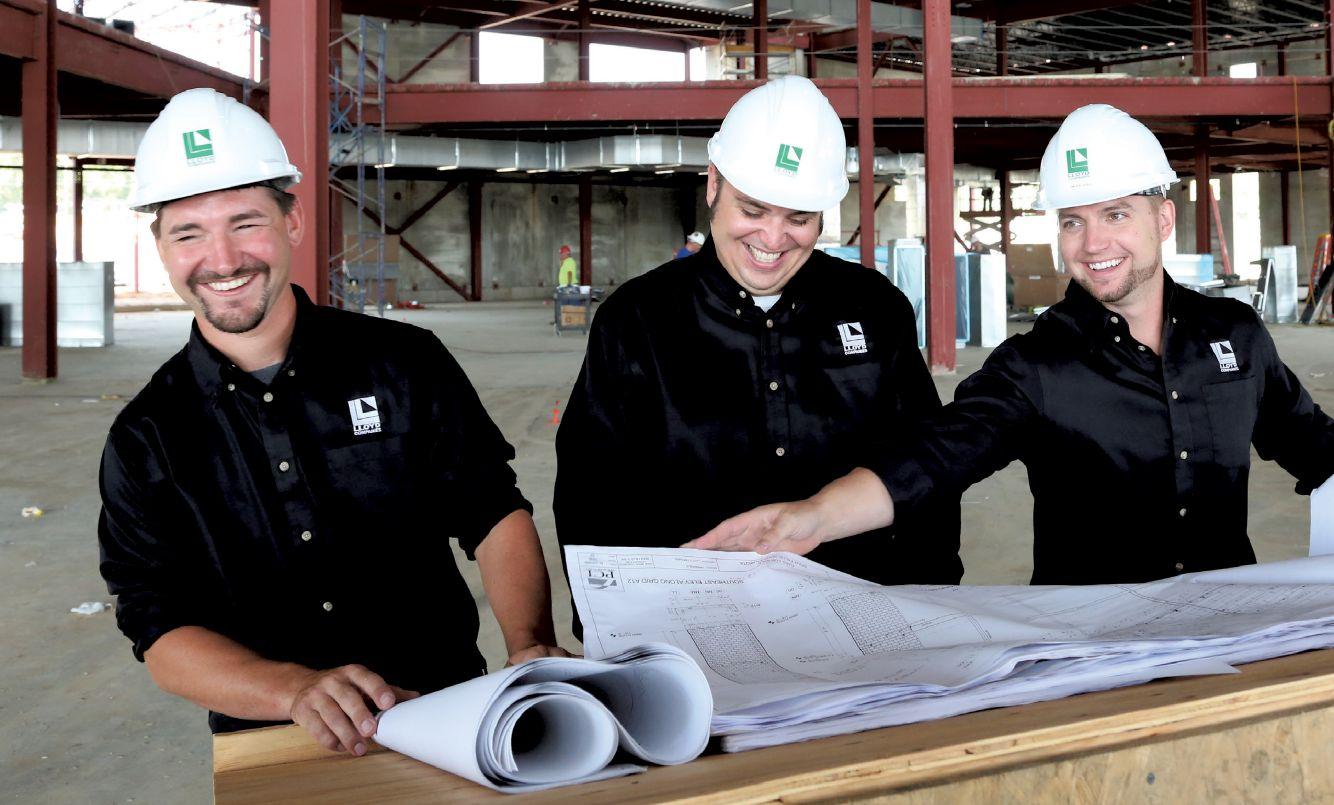 DEVELOPMENTCONSTRUCTIONREALESTATEPROPERTYMANAGEMENT
DEVELOPMENTCONSTRUCTIONREALESTATEPROPERTYMANAGEMENT






ALL IMAGES: NICK NELSON/FORUM NEWS SERVICE




At our 2019 awards ceremony, Prairie Business proudly presented our inaugural Leaders & Legacies Awards to the following executives, honoring those executives as some of the most successful and civic-minded leaders in our region. Congratulations to all!


Alan Richard “Dick” Dempster “has devoted his career to community service and architectural stewardship.”

And you don’t have to take our word for it, for that’s the summary of the South Dakota chapter of the American Institute of Architects, when they awarded Dempster their very first AIA South Dakota Legacy Award in 2017.
The award testifies to Dempster’s lifetime of service and achievement.
Dempster and two partners founded Architecture Incorporated in 1976. The first office was located in the basement of Dr. Montoya’s Dental Clinic on East 10th Street in Sioux Falls, Architecture Incorporated reports.
Today, the company is South Dakota’s biggest architecture firm and is housed in Sioux Falls’ former Masonic Library, a historic treasure that’s one of many Architecture Incorporated has preserved.
Under Dempster’s leadership, Architecture Incorporated became one of the four founding firms that helped establish the state’s first architecture program at South Dakota State University.
Dempster was one of five initial incorporators of the Historic South Dakota Foundation, a nonprofit that supports historic preservation efforts.

The Housing and Redevelopment Commission, the Sioux Falls Planning Commission, the Sioux Falls Board of Preservation, the Downtown Sioux Falls Design Committee and the Children’s Inn Board also have benefitted from his direct involvement.
A past president of AIA South Dakota, Dempster holds a bachelor’s degree in architecture from Iowa State University.

When life gives you lemons, make lemonade, the saying goes. Life gave Hal Gershman the fruit of the grape, and he made it into something even sweeter than wine.
Gershman became president of Happy Harry’s Bottle Shop – the liquor store in Grand Forks, N.D., that his father had founded – in 1976. Today, Happy Harry’s has two stores in Grand Forks and three in Fargo, N.D., but that’s just the start of the company’s recent history.

Twice named “One of America’s Ten Best” by Beverage Dynamics magazine, Happy Harry’s Bottle Shops now feature the largest selection of beer, wine and spirits between Minneapolis and Seattle, housed in striking buildings built to resemble barns.
“The real Happy Harry, Harry ‘Happy’ Gershman ... would, if he could see the family business now, be ecstatic,” Beverage Dynamics said in its 2010 cover story on the retailer.
“Also, astounded.”
But Hal Gershman’s record in civic and charitable works has matched his business success. Elected to the Grand Forks City Council in 2000, Gershman was chosen to be council president at his first meeting and remained president for as long as he stayed on the council, which was 14 years.

Meanwhile, in 2017 alone, Happy Harry’s contributed nearly $150,000 to charity organizations and events, while the Hal & Kathleen Gershman Family Foundation gave $192,633, Market Watch magazine reported.
The magazine cited the figures in honoring Hal Gershman with its 2018 Market Watch Leaders Community Service Award. And as Gershman told Market Watch, “it feels good to provide contributions, and it’s my belief that you always feel better giving than getting.”
In 2000, when the $18 million Walhalla State Bank in Walhalla, N.D., came under a cease-and-desist order and the top three managers were removed, a recently hired executive spoke up. “I pitched the idea to our regulator that I could lead the bank out of cease and desist,” the exec said in a later interview.
The regulator listened, and the executive, Brian L. Johnson, became president.



He was 25.
By 2001, the $18 million bank was a $25 million bank and well-placed for the merger that year with three other banks, which would form Choice Bank.
Johnson rose through Choice’s ranks to become president and CEO in 2011. Choice Bank now has some 380 team members and assets of $2.15 billion, the company’s website reports.
Johnson’s accomplishments as CEO include such things as securing $100 million in local dollars for the bank’s most recent capital raise. This let Choice buy Venture Bank, a successful community bank in the Twin Cities, in 2018.
And his philanthropic commitment has helped the bank succeed in that area, too, as shown by Choice’s being awarded the Corporate Leadership in Philanthropy Award by the Northern Plains chapter of the Association of Fundraising Professionals in November.

In one year, Choice had helped raise $176,092 for hospice care and more than $40,000 for local food banks, while workers donated nearly 5,300 hours to the bank’s communities.
“Choice Bank’s reputation of being a PeopleFirst, mission-driven company is known throughout the region,” said Karen Crane, president of the AFP chapter.
The company’s leadership “has resulted in over $1 million in donations. We are honored to recognize them and their generosity.”
TheUniversityofNorthDakotaisproudtosalutePrairieBusinessmagazine’sinauguralclass ofLeaders &Legacies —aTop10listofsomeofthe region’smostinnovativeandsuccessful businessexecutives.Bothenterprisingandinspiring,they’vemadeanindeliblemarkintheir communitiesandbeyond.
Thirty years ago, Lonnie Laffen and Gary Johnson started an architecture firm; and as with several other origin stories from this year’s Leaders & Legacies awards, their first year or two in business almost was their last. (Johnson didn’t take a paycheck for a part of their second year, JLG reports).

Today, JLG has grown to 120 people in 13 offices, has won more North Dakota-American Institute of Architects awards than any other firm in North Dakota, is one of MSN Money’s 50 Most Admired Companies, is one of Building Design+Construction magazine’s U.S. Architecture Giants and is one of Inc. Magazine’s 50 Best Places to Work in America. Also along the way, JLG has become 100 percent employee-owned. Besides helping to build one of the Midwest’s most successful architecture firms, Laffen has served as president of the North Dakota AIA and director of the North Dakota State University Architecture Advisory Board.
An enthusiastic community volunteer, Laffen also is a past chairman of the Grand Forks Chamber and the Downtown Leadership Group. He currently sits on the board of a number of organizations, including Altru Health System.


Laffen represented Grand Forks in the North Dakota Senate from 2010-18.
For all of this and more, Laffen received the Henry Havig Award – the Chamber of Grand Forks and East Grand Forks’ highest honor – in 2018.







“It’s incredibly humbling,” he said at the time.


“You work hard on all these things to improve your community, and you’re not looking for attention. But in all that service, what you find quickly is that you get back a lot more.”
When Tammy Miller became CEO of Border States Electric in 2006, her goal was to grow the company from $480 million in sales to $1 billion by 2011.

Mission accomplished. Next up: $3 billion, Border States having passed the $2 billion mark in 2018.
Meanwhile, the workforce of the company – America’s seventh-largest electric wholesaler – has expanded from 744 to more than 2,600 over Miller’s tenure.



Miller “is an innovative leader who has inspired this employee-owned company to enjoy unprecedented and continued growth,” the Association to Advance Collegiate Schools of Business wrote in 2015, when Miller won the association’s Influential Leader award.


“She is extremely well regarded in the industry and was the first woman in the 100-year history of the National Association of Electrical Distributors (NAED) to serve as the board chair.”


A proud alumna of Minnesota State University Moorhead, Miller joined Border States as the accounting manager in 1991. She became Southwest Region manager in 2003 and president in 2005.
Along with her Leaders & Legacies award, Miller also has won the NAED’s 2013 Women in Industry Trailblazer Award and 2010 Distributor Distinguished Service Award, the YWCA Woman of the Year in Business Award in 2009 and two distinguished alumni awards from MSUM.

In June, North Dakota Gov. Doug Burgum announced that Miller would be joining his administration as chief operating officer on April 1, 2020.
“We are thrilled, grateful and incredibly fortunate to be bringing on board another high-caliber leader with vast experience and success in running a large organization, and with strengths in executing strategy, engagement, communications, enhancing culture and being accessible,” Burgum said.

In 1954, when asked if he’d buy a Wahpeton, N.D., shoe-repair shop, Ed Shorma responded with, “I couldn’t make a down payment on a free lunch.”
But Shorma solved that problem by mortgaging the family car. Then a new issue arose, Shorma said in a recent video:



“The first week I started, I found out I didn’t have any money for the till. So an old guy who used to work there said, ‘Well, I’ll give you $10 for the till for change.’
“Two days later, the landlord said, ‘You owe me $40 for rent.’ So I went to the old guy again; he said, ‘I’ll lend you the $40. Now, you owe me $50.’
“Well, at the end of the week, I had grossed $103. I paid back his $50, and I gave $3 to the shine boy for all his efforts.
“So, I ended up with 50 bucks. And I was in business.”
That was 1954. By 1993, Shorma was standing in the Rose Garden, receiving the national Small Business Person of the Year award from President Ronald Reagan.

And today, “all of the business ventures he started during the late 20th century remain operational, employing hundreds if not thousands of local citizens,” wrote Karley Serati, Shorma’s granddaughter, in nominating him for a Leaders & Legacies award.
One of those businesses – WCCO Belting in Wahpeton – still is owned by the Shorma family. It makes custom rubber belting for the agriculture, construction, industrial and recycling industries, and sells those products worldwide.
“To this day, my grandpa says he never failed,” Serati wrote. “He had his fair share of setbacks, but he never failed because he never quit.”
Paul Steffes is the founder and chief innovation advisor for Steffes LLC, a manufacturer headquartered in Dickinson, N.D. Steffes specializes in steel fabrication and electrical services for a variety of industries.

Steffes majored in mechanical engineering at North Dakota State University. After college, he returned home to Dickinson and started Steffes & Son Manufacturing with his father, George.

The first 5 to 10 years of Steffes & Son were starvation years as the pair explored different opportunities. From these years, Steffes developed his philosophies of always reinventing the company and being willing to take risks and try new things. His innovation motto is “If you’re not failing, you’re not trying.”
Over the past 30 years, the small family business has grown into one of the largest employers in southwest North Dakota. It now holds more than a dozen patents and continues to embody its family-oriented spirit.





Over the past few years, Steffes has stepped away from a CEO role to focus on helping the business through perpetual reinvention and successful succession for the next generations.

Passionate about giving back to the community, Steffes says he’s most proud of leading Friends of the Pool (through which he helped fundraise for Dickinson to build the West River Community Center) and being a cochair for the fund drive to rebuild Trinity High School after a fire. Steffes has had a handful of mentors whose help and influence he’ll never forget. But his driving force, he says, has been his wife Laurie, children, grandchildren and other family, friends and coworkers.


CongratulationstoWCCO Belting, Inc. founder, nationally recognizedentrepreneur, and“Leaders &Legacies” Awardrecipient, Ed Shorma, who recently celebratedthecompany’s 65th business anniversarywith anew facilityexpansion.



When Steve Stenehjem was a boy, his family would take trips across North Dakota. And when they’d cruise through the state’s small towns, Steve’s dad, Leland Stenehjem, would say, “You can always tell what kind of banker a town has just by driving down its Main Street.”
Leland would know; he was president of First International Bank, the bank his own father had founded in western North Dakota in 1910.
In 1996, Steve Stenehjem became the third-generation CEO.
Today, First International Bank & Trust is North Dakota’s second largest, with 27 branch locations throughout North Dakota, Minnesota and Arizona and nearly 650 employees. And while it took the bank 100 years to reach $1 billion in assets, it took only another five to reach $2 billion, and now the bank values its assets at close to $3 billion.
In 2018, when the bank was considered for an award at the Best Banks in America Super Conference, it took home the grand prize. The national honor is awarded for exemplary performance in philanthropy, customer service, thought leadership, workplace culture and financial literacy education, five key areas of banking.




Speaking of philanthropy, the Stenehjem family donated the land and provided financing for the Watford City Rough Rider Center, a 250,000-square-foot facility that provides space for meetings, sporting events, concerts and conventions. They donated land for the construction of Watford City High School and Fox Hills Golf Course. With these and other efforts, Stenehjem tries to ensure that First International Bank & Trust communities will reflect his father’s vision of a city with a good banker for years to come.
Your bu sine ss’s su cc es shas be en DC N’sb us in ess sinc ed ay on e. Wh ethe ryouhave ao ne -orm ul tisiten et wo rk ,wes er ve as yo ur busi ne ss’s si ng le po int of co ntac t andprovide 24 /7/365 suppor tfrom ou rh ighly tr ai ne dtec hnicia ns .


Steve Swiontek is the executive chair and chair of the board at Gate City Bank. He began his career at the bank in 1978 as a management trainee, and served as chair, president & CEO between 2001 and 2019.


Gate City Bank, which was founded in 1923, had 24 locations in 2001. Under Swiontek’s leadership, it has expanded to 38 locations across 19 communities in North Dakota and west central Minnesota and is the No. 1 mortgage lender in North Dakota.
Swiontek’s vision also has helped Gate City Bank become a community leader in philanthropic giving. The bank provided $2.2 million to local nonprofit organizations in 2018.
And Swiontek makes a priority of improving work life for the bank’s team members by providing an excellent workplace culture and comprehensive benefits. As a result, the bank offers 12 weeks of paid maternity leave, paid paternity leave, team member loan programs and opportunities for growth and development. It also encourages volunteering on company time, a commitment that totaled 14,100 hours.
For these and other efforts, Gate City Bank with its 700plus team members has been recognized by Prairie Business magazine as one of the 50 Best Places to Work for five years in a row.
Swiontek leads by example and strives to inspire the bank’s mission of providing a better way of life for customers, communities and team members.
When sponsors are listed for the area’s charitable organizations and events, among the corporate names that turn up most often is this one: Vaaler.


Safe Kids Grand Forks: Vaaler. St. Joseph’s Thrift Store: Vaaler. Care Providers of Minnesota: Vaaler. Red River Valley Community Action: Vaaler. Greater Grand Forks Women’s Leadership Cooperative: Vaaler. Art on the Red: Vaaler.
Junior Achievement: Vaaler, and for 22 years, ever since the Vaaler family first brought the program to the attention of Grand Forks Public Schools.
Vaaler is shorthand for Vaaler Insurance, a regional agency that has been providing insurance and financial services for 72 years.
Bruce Vaaler is the third-generation owner, president and CEO. “When I was young, I would clean the agency on Saturdays while my father worked, so that was my first taste of the business,” Vaaler once told Prairie Business.

“After high school, I went to a college (the University of Iowa) with one of the few insurance departments in the country, so, at that point, there was no turning back. Insurance was and still is exciting to me.”
Vaaler is one of the 4 percent of the nation’s property casualty employees who’ve earned the Chartered Property Casualty Underwriter designation, a credential often called the CPA of the insurance industry. Under his leadership, Vaaler Insurance now has 88 employees and locations Grand Forks, Fargo, Bismarck and Minneapolis.
But the company is known as much for its civic spirit as it is for its business success; and in both cases, Vaaler deflects the credit.
“It’s an honor to get an award that really belongs to all our staff,” he said at Prairie Business’ Leaders & Legacies event.







GRAND FORKS, N.D. – Tom Erickson, CEO of the Energy and Environmental Research Center in Grand Forks, N.D., is transitioning to a new opportunity: leader of the new State Energy Research Center of North Dakota.
In April, the North Dakota Legislature passed a bill creating and funding SERC, which will operate from the EERC. The new center will get $5 million a year to conduct research that advances future energy opportunities to benefit North Dakota’s economy and environment.
Erickson earned bachelor’s and master’s degrees from UND in chemical engineering. He began working at the EERC – then known as the UND Energy and Mineral Research Center – as a student in 1986 before being hired as a full-time research specialist in 1988.

FARGO, N.D. – Retired U.S. Air Force Maj. Gen. Terry Scherling has joined the U.S. Bank Community Advisory Board for southeastern North Dakota.
Scherling brings nearly 40 years of military, technology and security expertise to the bank. She is the founding owner, president and CEO of TENICA and Associates, a private consulting and government services company based in Virginia.
Scherling retired from the Air Force in 2009 after serving 33 years.
Scherling received her bachelor’s degree in physical education from North Dakota State University and a master’s degree in national resource strategy from the National Defense University. She has an honorary doctorate from NDSU.

BROOKINGS, S.D. – Eluned Jones has been named the founding director of South Dakota State University’s Ness School of Management and Economics.
The Ness School has more than 700 undergraduates majoring in business economics, entrepreneurial studies and economics. Jones came to SDSU in 2012 after working at Texas A&M University and at Virginia Tech. She holds a bachelor’s degree from the University of Bath, United Kingdom, a master’s degree from North Carolina State University and a doctorate in agricultural economics from Texas A&M.
Jones is a fellow of the Kellogg-funded Leadership Development Program at the National Center for Food and Agricultural Policy.
ST. PAUL, Minn. – Engineering firm



KLJ has hired Cristian Encalada and Jessica LoBello in the company’s St. Paul office.

Encalada joins KLJ as an OSP designer. He earned a master’s in telecommunication systems from the University of Buenos Aires – Argentina.
LoBello comes to KLJ as a structural engineer. She earned her master’s degree in structural engineering from Milwaukee School of Engineering and is a registered professional engineer in Minnesota.

We takea personalinterestinthe workbeing donearoundus.Andattheendoftheday, we’re

FARGO, N.D. – Flint Group has promoted Jen Strickler to senior vice president of brand experience. She will lead Flint Group’s Duluth and Twin Cities offices. Strickler has more than 20 years of marketing experience and recently led Flint Group’s creative, user experience and technology teams.


GRAND FORKS, N.D. – Kevin Hanson, chief operating officer of Gate City Bank, will become the bank’s new president and CEO on July 1, the bank has announced.
Hanson will replace current president, CEO and board chair Steve Swiontek, who will become the bank’s executive chair. Swiontek will retire next year but will remain the chair of the bank’s board.
Hanson has worked for Gate City Bank for more than 36 years. He began as a management trainee and also served in positions such as loan officer and director of lending.
A Fergus Falls, Minn., native, Hanson graduated from Moorhead State University in 1983 with a bachelor’s degree in finance.
FARGO, N.D. – Ian Carlstrom has been named the new North Dakota Small Business Development Center business advisor for the state’s southeastern region.
The job is a new position jointly funded by the North Dakota State Research and Technology Park and the North Dakota Small Business Development Center.
Carlstrom worked with the Minnesota Small Business Development Center while employed by the Entrepreneur Fund in Grand Rapids, Minn.
He earned a bachelor’s degree in business administration and an MBA from North Dakota State University.
BISMARCK, N.D. – Kaleb Dschaak, a student at the University of North Dakota, has been appointed to a one-year term as the student representative on the state Board of Higher Education.

Dschaak graduated from Dickinson (N.D.) High School in 2015 and anticipates graduating from UND in 2020 with majors in marketing and political science.
He has served as president of the North Dakota Student Association, vice president of the UND student body and president of the Future Business Leaders of America.
Dschaak was appointed to the state board by North Dakota Gov. Doug Burgum. His term on the board began July 1.
 Kevin Hanson
Kaleb Dschaak
Ian Carlstrom
Kevin Hanson
Kaleb Dschaak
Ian Carlstrom
BROOKINGS, S.D. – The South Dakota State University Foundation recently added Jamaal Cummings and Clay Hoffman as loyalty giving officers.

• Cummings is originally from Fairbanks, Alaska. He earned a bachelor’s degree in sports management from the University of Minnesota-Morris and a master’s degree in sports administration from Arkansas State University.
Cummings worked for the Pierre Trappers, a collegiate summer baseball team.
• Born and raised in Winner, S.D., Hoffman received a bachelor’s degree in political science from the University of South Dakota in 2015. Before joining the SDSU Foundation, he worked in political campaigns.


FARGO, N.D. – Erik Holmberg has been promoted to director of IT Solution Delivery at Blue Cross Blue Shield of North Dakota.
In his role, Holmberg is responsible for the oversight of software development, project management, QA testing, code deployment and successful delivery of applications within BCBSND.
A native of the Fargo-Moorhead area, Holmberg joined BCBSND in 2014 as an IT portfolio manager. He then assumed responsibility as a manager in IT Solution Delivery before being promoted to his current position as director.


Our primary efforts include frequent one-to-one, manager-toemployee conversations – whether face-to-face or via video or email – along with monthly in-person safety and informational meetings for each remote work group.
We also publish a twice-weekly company newsletter (which includes videos), broadcast quarterly livestreams from our president and hold annual employee townhalls.
And every member of our executive team is partnered with a remote work group that they visit at least twice a year. With all the changes taking place in our industry, we strive for consistency in communications.
Staying true to our value of enthusiasm, we at Blue Cross Blue Shield of North Dakota focus on continually building a supportive remote culture from the ground up.

We’ve invested in video technology to allow face-to-face connections during meetings, we have open chat rooms, and when possible, we offer remote workers the same opportunities to participate in events as onsite employees.
Last but not least, we periodically send surprise care packages to remote employees with things such as T-shirts, giveaways and gift cards. Our remote employees also have organically built a supportive network to help each other navigate their unique employee experience.
Kelsey Roth Director of Human Resources OperationsBlue Cross Blue Shield of North Dakota Fargo, N.D.

With more than 150 team members spread among three offices and working remotely in 23 states, Stoneridge Software understands the importance of building culture over distance.
One of the most important things to consider with remote team members is choosing and using the right communication tools. We use many modes of communication including email, instant messaging, Microsoft Teams and video calls – all which expedite the relationshipand trust-building process.
We also insist on weekly department meetings where all are expected to participate by sharing their “personal” and “professional” best for the week. This intersection of what’s important to each person both at work and home reinforces a culture of friendship and fun in addition to competence and professionalism.
Scearcy Chief People Officer Stoneridge Software Barnesville, Minn. Tracy Zierke Manager, Human Resources Noridian Healthcare Solutions Fargo, N.D.
Tracy Zierke Manager, Human Resources Noridian Healthcare Solutions Fargo, N.D.



Noridian is headquartered in Fargo, but we have 650 remote workers spread across 44 states. That is 42 percent of our workforce!
Keeping remote workers engaged is challenging. Our onboarding program lays the groundwork for engaging remote staff, connecting them with the information, tools and resources they need. But keeping them engaged really comes down to taking the extra effort.
• Be intentional. Carve time out to share personal interests and build relationships; keep consistent team touchpoints with meaningful and effective agendas; send a quick Skype message just to say “Hi” and check on how things are going.
• Be available. Set “free” time on your calendar, respond to Skype messages and promptly return phone calls. Don’t create a culture where the only time remote employees hear from you is when you deliver bad news or an increase in workload.
• Recognize their value. Send them hand-written notes, include them in employee focus groups, and seek their input during meetings.
• Foster a sense of purpose. Physical distance can create an “us versus them” feeling, so we work hard to promote inclusion through our words and actions. We emphasize that we all work toward our goal of delivering solutions that put people first. We are each part of the solution.
Leading Economic Indicators, last 20 months (50.0 = Growth Neutral)
Index = 100 in 2001
200 150
The May Creighton University Mid-America Business Conditions Index “fell to a still solid reading signaling positive, but slowing, growth for the region over the next three to six months.
“The Business Conditions Index, which ranges between 0 and 100, declined to 54.3 from April’s 55.9. This is the second straight decline in the overall index, but the 30th straight month the index has remained above growth neutral 50.0.
Source: Creighton University
“The regional economy continues to expand at a positive pace,” said Ernie Goss, PhD, director of Creighton University’s Economic Forecasting Group.
“However, tariffs and flooding across several states pulled the overall index below growth neutral for four states: Iowa, Nebraska, North Dakota and Oklahoma.”
100
50 2001 2017 2016 2015 2014 2013 2012 2011 2010 2009 2008 2007 2006 2005 2004 2003 2002
Source of graphic: Federal Reserve Bank of Minneapolis
Source of data: Bureau of Economic Analysis
AVERAGE STUDENT LOAN DEBT BY STATE, CLASS OF 2017
Source of graphic: Federal Reserve Bank of Minneapolis

Source of data: Brookings Institution and the Bureau of Labor Statistics
“In the Ninth District, 26 percent of the existing jobs are at ‘high risk’ of automation over the next several decades, a percentage point higher than the national average. ...
“The highest concentrations are in rural areas of the district, with nonmetropolitan counties in western Wisconsin and far western North Dakota leading the way. About a third of the jobs in those counties are at high risk. Especially numerous are truck drivers and restaurant workers.”
April 1971 to June 2019
15

9th District = 26.2% 5
= 25.2% 10
Source of graph: Mortgage News Daily
UTAH Avg. Debt per Borrower: $18,425 % change from Class of ‘16: -2.05 % 39% NEVADA Avg. Debt per Borrower: $22,026 % change from Class of ‘16: -8.73 % 49% WYOMING Avg. Debt per Borrower: $22,524 % change from Class of ‘16: -11.25 % 47% MINNESOTA Avg. Debt per Borrower: $31,231 % change from Class of ‘16: -0.35 % 68% DELEWARE Avg. Debt per Borrower: $34,144 % change from Class of ‘16: 1.47 % 62% PENSYLVANIA Avg. Debt per Borrower: $36,193 % change from Class of ‘16: 2.87% 67% ALABAMA Avg. Debt per Borrower: $31,861 % change from Class of ‘16: 1.93 % 50% 53% NEW MEXICO Avg. Debt per Borrower: $21,805 % change from Class of ‘16: 2.3 % 50% CALIFORNIA Avg. Debt per Borrower: $22,383 % change from Class of ‘16: -0.47 % 66% NORTH DAKOTA Avg. Debt per Borrower: $26,080 % change from Class of ‘16: 1.03 % 73% SOUTH DAKOTA Avg. Debt per Borrower: $31,332 % change from Class of ‘16: -0.59 % 74% NEW HAMPSHIRE Avg. Debt per Borrower: $33,462 % change from Class of ‘16: -4.78 % 64% RHODE ISLAND Avg. Debt per Borrower: $35,371 % change from Class of ‘16: 15.78 % Proportion of grads w/ debt
Source: LendEDU.com
Formorethan42years, Ihavehadthegreat privilegeofservingourcustomers, working withanoutstanding teamandbeingpart of agrowing,innovative,andcustomer focusedorganization.
At Gate CityBank, we’recommittedto making adifferenceeverydayand we’re passionateabout providing abetterway oflifeforourcustomers, communitiesand teammembers
SteveSwiontek ExecutiveChair,GateCityBank
gatecity.bank

24/7
WithEssentiaE-Visit,youcan seeoneof ourprovidersfromtheconvenience ofyourtablet,phoneordesktopforjust$30.Noappointmentnecessary. This landisvast,yetwekeepeachotherclose.

Start avisitatEssentiaHealth.org/EVisit.
